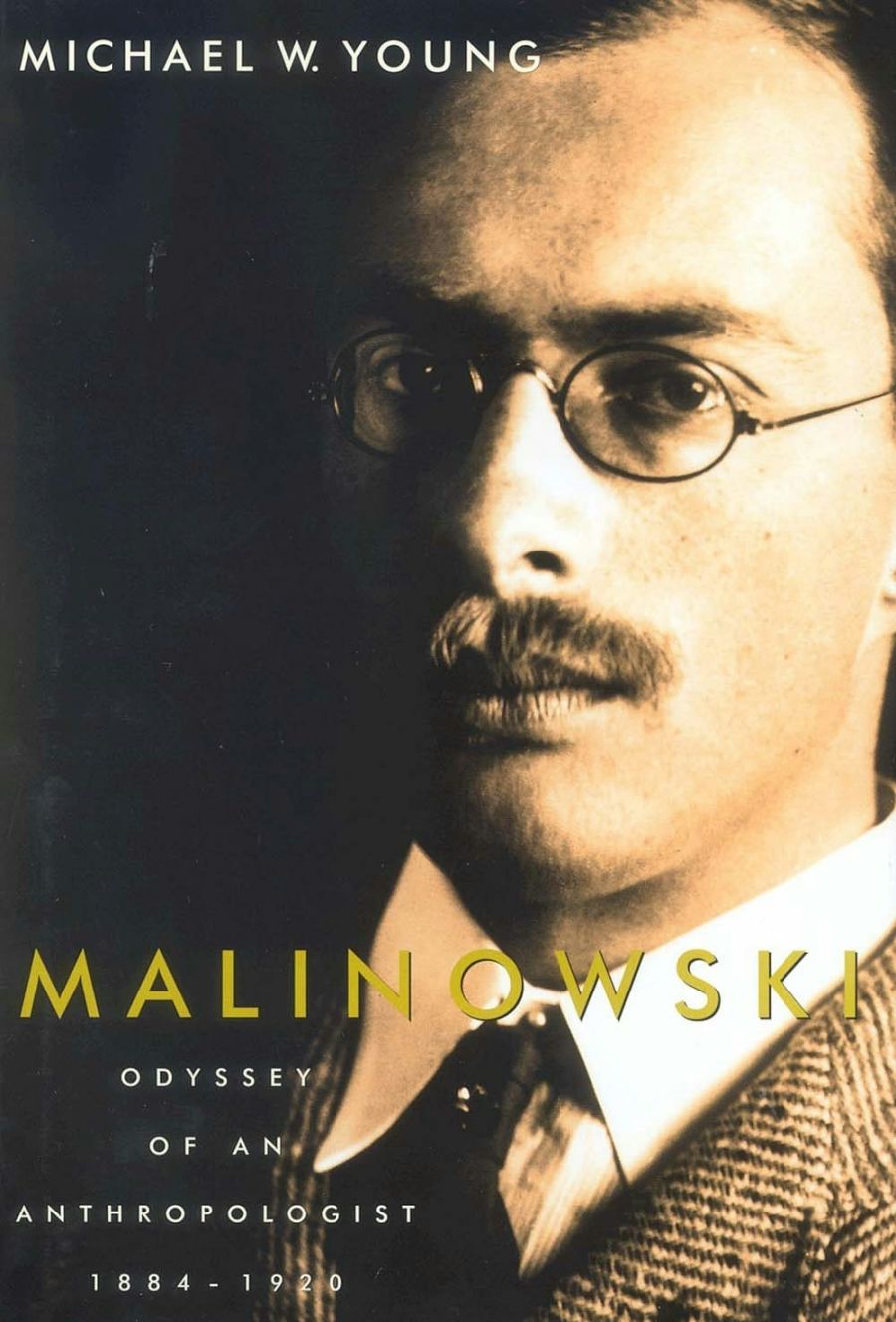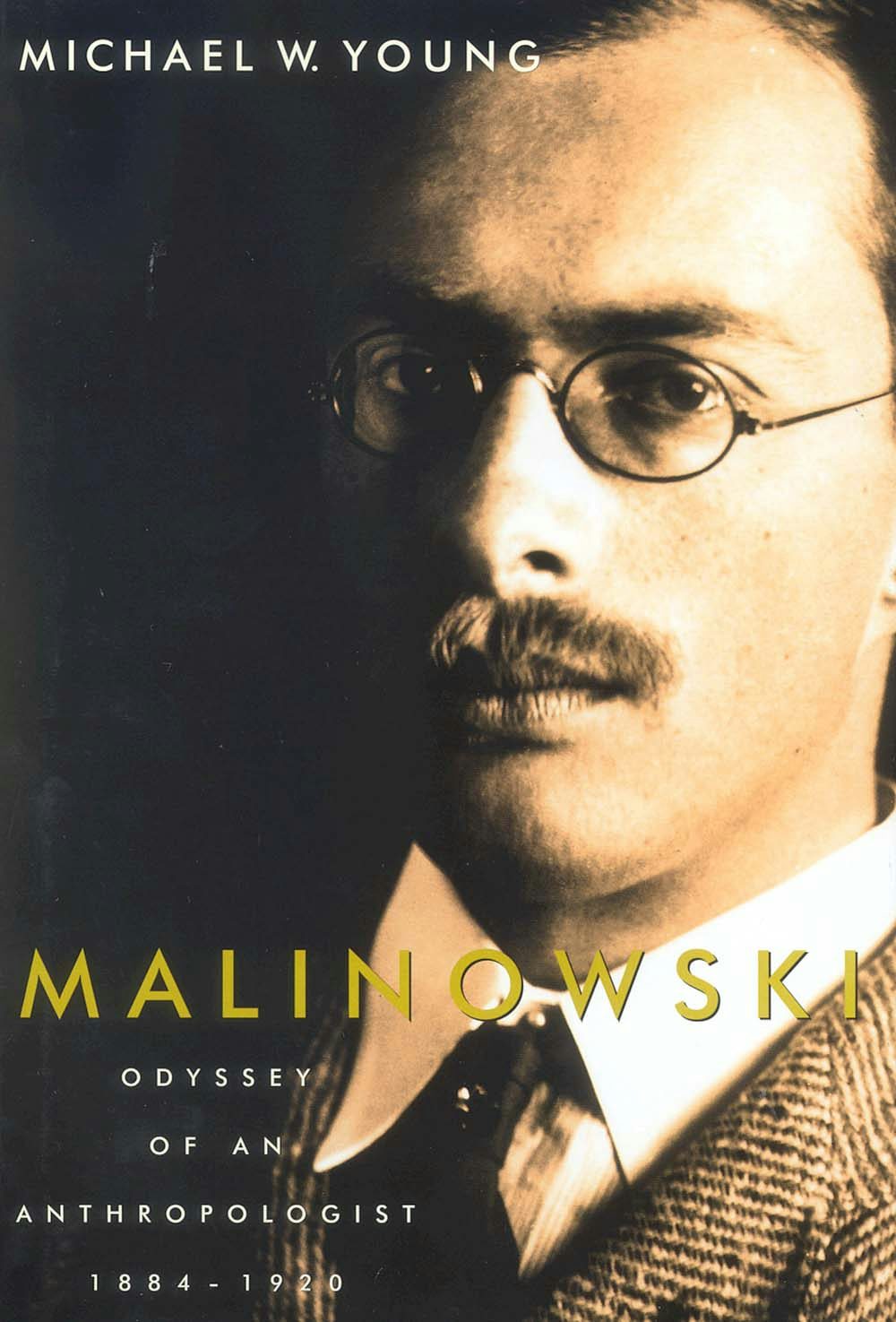
- Free Article: No
- Contents Category: Biography
- Review Article: Yes
- Article Title: A Brittle and Permeable Ego
- Online Only: No
- Custom Highlight Text:
Of all the social scientists ever supported by an Australian government, Bronislaw Malinowksi had the biggest impact on twentieth-century thought. His ‘functionalist’ theory of culture in the early 1920s – using evidence that he had collected in Australia’s New Guinea territories during World War I – challenged evolutionism. Instead of ranking cultures on a developmental scale from ‘primitive’ Them to ‘civilised’ Us, social science would strive to understand each culture in its own terms, as a particular set of strategies for meeting universal material needs and psychological drives. Malinowski proposed a humanism that could stare Freud in the face and accommodate the moral catastrophe of 1914–18.
- Book 1 Title: Malinowski
- Book 1 Subtitle: Odyssey of an anthropologist 1884-1920
- Book 1 Biblio: Yale University Press, $87.95 hb, 720pp
- Book 1 Cover Small (400 x 600):

- Book 1 Cover (800 x 1200):

I anticipate. Those intellectual achievements will be told in Volume Two (due in 2007) of Michael Young’s rich and absorbing biography. Volume One (newly short-listed for the James Tait Black Prize in the UK) takes us up to Malinowski’s thirty-sixth year, his marriage to Melbourne’s Elsie Masson, and the newly-weds’ voyage to London, where Malinowski will write and teach anthropology’s transformation between the world wars. The book under review gives us the youth and early manhood of this resolutely introspective Pole, including three hundred pages on his fieldwork in the islands off Papua’s eastern shores.
The archive on which Young works is the product of an intelligence that was as relentless in its inner searchings as it was adventurous in its global curiosity. Malinowski, well born and well educated, was exposed in his teens, during the 1890s, to the ‘Young Poland’ movement animating Cracow and Zakopane. Young lists its elements (and his stories about Malinowski and his friend Stas Witkiewicz evoke them): French Symbolism, German modernism and fin de siècle Decadentism, nature romanticism, eroticism, individualism, Nietszche’s celebration of heroic genius, humanism, and Polish patriotism. One of the character formations of this ethos was an assumption of duty towards the perfectibility of one’s own body, mind, and spirit.
In this endeavour, Malinowski’s mother Josefa’s devotion (Young notes his lifelong silence about his father, a distinguished folklorist) was both his platform and the trapdoor through which he could fall. Serious illness, including semi-blindness, in adolescence ‘entailed a series of helpless surrenders to Mother’s care’. It was real care; by reading his schoolwork to him, Josefa enabled his education to continue. Young traces the effects of this dependence on Josefa in Malinowski’s fieldwork diaries, twenty years later: narcissism, ‘a brittle and permeable ego’. However, we can’t doubt that her devotion was enabling. In 1906, when he was twenty-two, she took him to the Canary Islands for eighteen months. In her company, but in the privacy of his own soul, he found the mental space to examine and to drill his energies, a painfully diarised assertion of intellect and spirit over the frailties and commands of the body. A quarter of the way into this book, the reader sees that Malinowski’s ethnographic writing is not to be the main documentary basis of this life story. The diaries and the letters substantiate Young’s Malinowski. To say that Young renders his subject’s scholarly achievements incidental to a narrative of inner life would overstate my point. Young – an anthropologist who worked where Malinowksi worked, half a century later – admires the anthropological work too much to demote it, and the reader is treated to many deft sketches of the small world of Edwardian ethnology, and of the techniques and substance of Malinowski’s originality.
However, the book’s emotional climax is Malinowski’s commitment to marriage with Masson, after years of infatuations, flirtations, passions turned to friendship, and friendships tinged with romantic yearnings. The archive of letters, including those from some of the women, enables Young to present Malinowski as a man driven to find happiness with women, baffled by his own heart but articulate in his self-dismay.
Admiring the cosmopolitan English, Malinowski moved to London in 1910. By 1913 he could call England his second spiritual home. It took little time for him to become a gifted writer in English, and Young follows Malinowski in dwelling on the parallel with Joseph Conrad. Malinowski was frustrated by British reticence about the inner life, a point of friendly dispute with Elsie when they become intimate a few years later, but he enjoyed the intellectual stimulus afforded by the British Museum’s ethnological works and by the researchers in Oxford, Cambridge and London who were adding to them. Charles Seligman, his supervisor at the London School of Economics, had visited and written on the Torres Strait and Papua, and he was supportive in every way when it came Malinowski’s time to sojourn among the natives in 1914.
As the only Polish member of the British Association’s ‘Overseas Party’, Malinowski was in Australia when the Great War broke out. He was suspected of enemy sympathies and cut off from the funds set aside for his Papuan research. Fortunately, some Australian officials believed that anthropological research could make them better rulers of Melanesians, and so began Australia’s patronage, at times ambivalent and precarious, of the Pole’s immersion into the British–Australian and Melanesian milieux.
Young presents Malinowski as multiply estranged, from 1915 to 1920, as he moved back and forth between Australian cities (mostly Melbourne) and Papuan islands. He marshals Malinowski’s diary and the many letters that he wrote and received into a stream of consciousness – bewildered by the obligations of intimate friendship with Nina Stirling, tormented by the temptations of dusky bodies (and of his own), impatient at the recalcitrance of ‘nigger’ helpers, threatened by his uncertainties about the continuing support of Professors Masson and Spencer, and of the Papuan ‘proconsul’ Hubert Murray, and always recording, recording. He found intermittent solace in a cabal of central Europeans in East Melbourne and in a number of Conradian characters in the Trobriands. Page by page, Elsie emerges as a pillar of loving good sense.


Comments powered by CComment